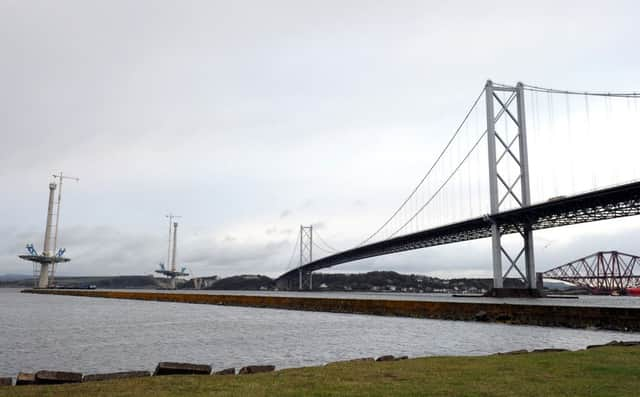Leaders: Chaos proves role of bridges old and new


The closure of the Forth Road Bridge has proved yet again that it is among the single most crucial links in the Scottish transport network, and of fundamental importance to the country’s economy.
Aside from the disruption and misery which has just been inflicted on tens of thousands of commuters and other travellers, the cost of that upheaval could top £50 million alone, as we report today.
Advertisement
Hide AdAdvertisement
Hide AdThe full economic impact is still being totted up by government officials, and it will doubtless be a pretty impressive sum – but for all the wrong reasons.
Ministers will reassure themselves that, whatever the short-term pain, they can look forward to a brand new replacement bridge being completed in a year’s time – and they confirmed yesterday it remains on schedule.
The Queensferry Crossing is said to have none of the flaws that have increasingly dogged its older sister – including support cables which can be replaced without threatening the whole structure, and windproofing that should mean it never shuts when the gales strike.
But the opening of the new bridge should be the opportunity to make sure we are never in our current appalling predicament again.
Under current government plans, the Forth Road Bridge will go into semi-retirement, its 70,000 vehicles a day replaced by a few dozen – hundreds at most – buses and taxis.
That strategy to turn the crossing into a “public transport corridor” is all very well, but if we are to keep it open at all, it must be readied for all eventualities. A backlog of repairs is planned when the bridge hands over its mantle to the Queensferry Crossing, but we must go far further than that.
The transfer has been prompted by fears over the long-term strength of the Forth Road Bridge’s main support cable, after corrosion was unexpectedly found among its tightly-wrapped wires.
Instead of the huge disruption of replacing the cable, a new bridge was ordered instead.
Advertisement
Hide AdAdvertisement
Hide AdThe cable, in its weakened state, is being prevented from further deterioration – it is hoped – by blowing dry air through the wires.
But whatever the reliability claims being made of the Queensferry Crossing, we can’t afford to be a hostage to fortune again. If the unpredictable happens with that bridge, the economic cost is likely to be far higher.
So let’s future proof one of our most important strategic assets, at whatever the cost, so it can be brought back into full use in an emergency.
Taking most of the traffic away will provide the opportunity to make the Forth Road Bridge as good as new. A complete refurbishment. Even the support framework under the bridge which has caused the current trouble should be replaced. It should be enclosed and protected from the elements, like the Queensferry Crossing’s will be. After all, it was number one on the last bridgemaster’s wish list, if he had been given the money. We must not leave the nation’s infrastructure in such a parlous state, as the Forth Road Bridge was found to be this week.
If our economy can be so significantly affected by the closure of a single bridge, we must make sure there is no repeat.
Voters distanced from Westminster
By-elections can be fascinating, giving an actual snapshot of political thinking. Of course the usual huge caveat should apply: never read too much in to one result, but what can we take from the first by-election of the new parliament in Oldham West and Royton?
Well it was not a happy night for Ukip and Nigel Farage. Perhaps it was never going to be given the large Labour-voting Asian population but they performed worse than they did in Heywood and Middleton and expectations were higher. This reinforces the fact they have got a long way to claw back before they can be thought of as any kind of force in British politics.
And the Tories nationally are seemingly on a wave, Cameron standing strong on security and they have been wooing the North with tales of a Northern powerhouse. And yet their share of the vote halved. And the best performance came from the party – in parliamentary terms at least – that is the most divided and shambolic. Labour managed a higher share of the vote than they did in the general election.
Advertisement
Hide AdAdvertisement
Hide AdJeremy Corbyn’s weak leadership and anti-war stance were thought to be such a liability that Ukip placed it front-and-centre of their campaign. The received wisdom in Westminster and most places within the political beltway was Corbyn was bound to be an electoral liability. Not so much. His supporters will obviously now be using this to justify their view that the country and the party think differently from MPs, and its the first two that count.
So, yes it is just one by-election result, and yes, the fact the winner was a well-respected candidate would have played a part. But the one overriding theme is a disconnect between what people in and around Westminster think and what these voters think.